Abstract
Intact plants of Xanthium strumarium L. were subjected to a water stress-recovery cycle. As the stress took effect, leaf growth ceased and stomatal resistance increased. The mature leaves then wilted, followed by the half expanded ones. Water, solute, and pressure potentials fell steadily in all leaves during the rest of the stress period. After 3 days, the young leaves lost turgor and the plants were rewatered. All the leaves rapidly regained turgor and the younger ones recommenced elongation. Stomatal resistance declined, but several days elapsed before pre-stress values were attained.
Abscisic acid (ABA) and phaseic acid (PA) levels rose in all the leaves after the mature ones wilted. ABA-glucose ester (ABA-GE) levels increased to a lesser extent, and the young leaves contained little of this conjugate. PA leveled off in the older leaves during the last 24 hours of stress, and ABA levels declined slightly. The young leaves accumulated ABA and PA throughout the stress period and during the 14-hour period immediately following rewatering. The ABA and PA contents, expressed per unit dry weight, were highest in the young leaves. Upon rewatering, large quantities of PA appeared in the mature leaves as ABA levels fell to the pre-stress level within 14 hours. In the half expanded and young leaves, it took several days to reach pre-stress ABA values. ABA-GE synthesis ceased in the mature leaves, once the stress was relieved, but continued in the half expanded and young leaves for 2 days.
Mature leaves, when detached and stressed, accumulated an amount of ABA similar to that in leaves on the intact plant. In contrast, detached and stressed young leaves produced little ABA. Detached mature leaves, and to a lesser extent the half expanded ones, rapidly catabolized ABA to PA and ABA-GE, but the young leaves did not. Studies with radioactive (±)-ABA indicated that in young leaves the conversion of ABA to PA took place at a much lower rate than in mature ones. Leaves of all ages rapidly conjugated PA to PA-glucose ester. Furthermore, when half expanded leaves were stressed on the intact plant, their rate of ABA catabolism was enhanced, an effect not observed in the young leaves.
In conclusion, young leaves on intact Xanthium plants produce little stress-induced ABA themselves, but due to import and a low rate of catabolism accumulate more ABA and PA than mature leaves.
Full text
PDF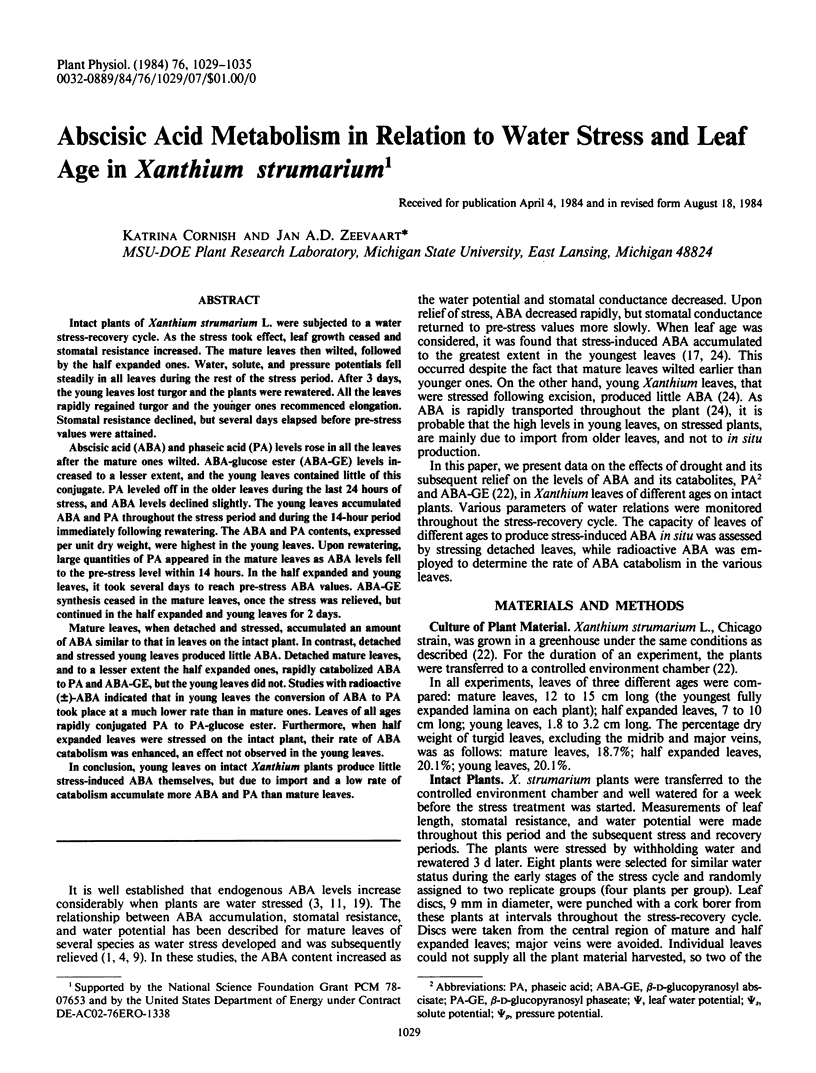
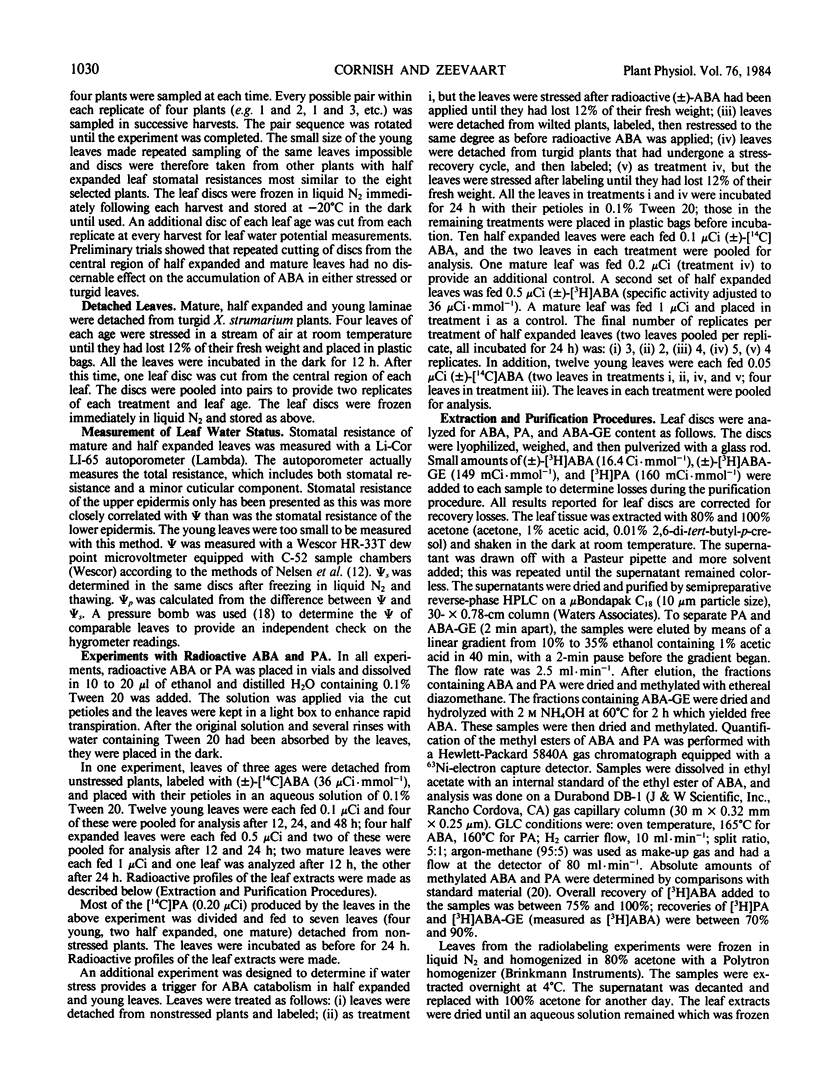
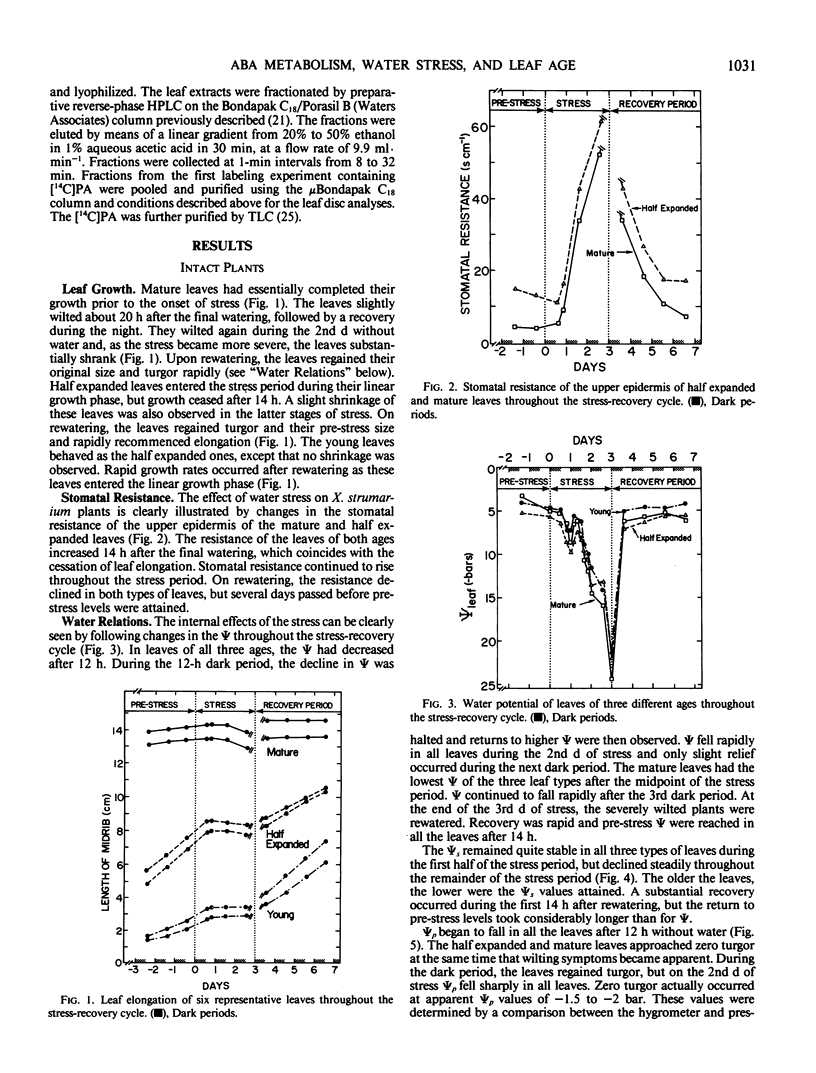
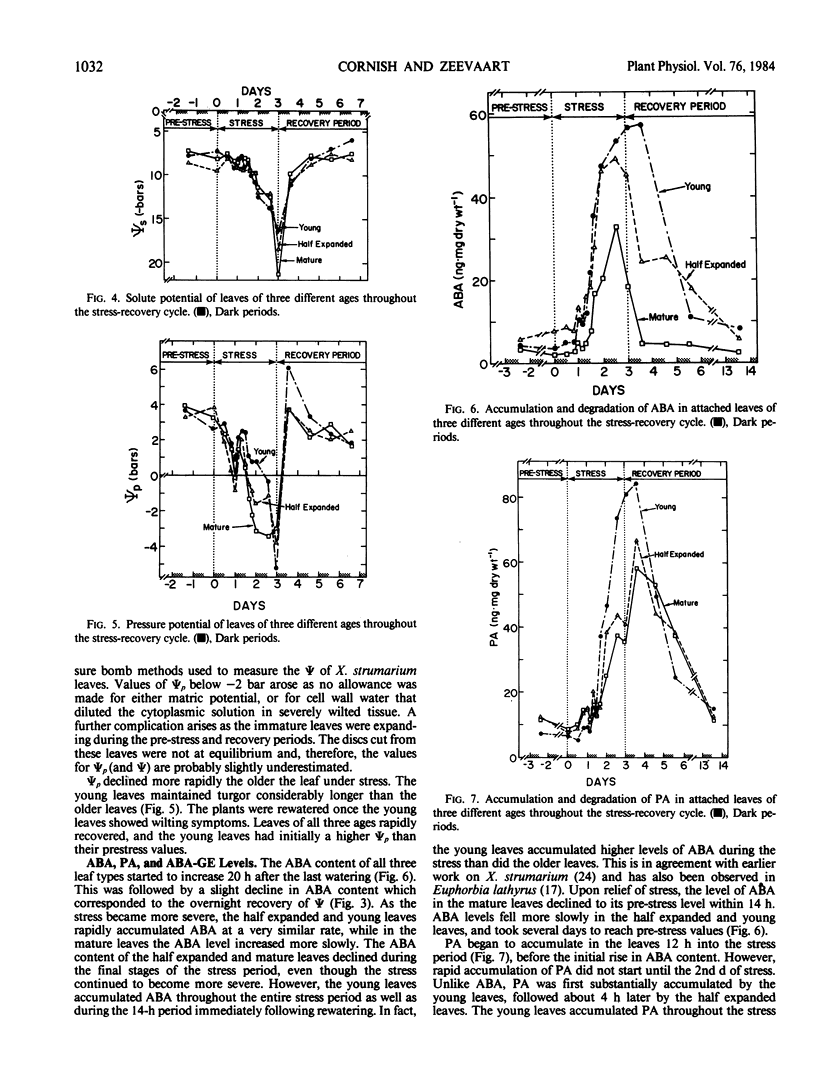
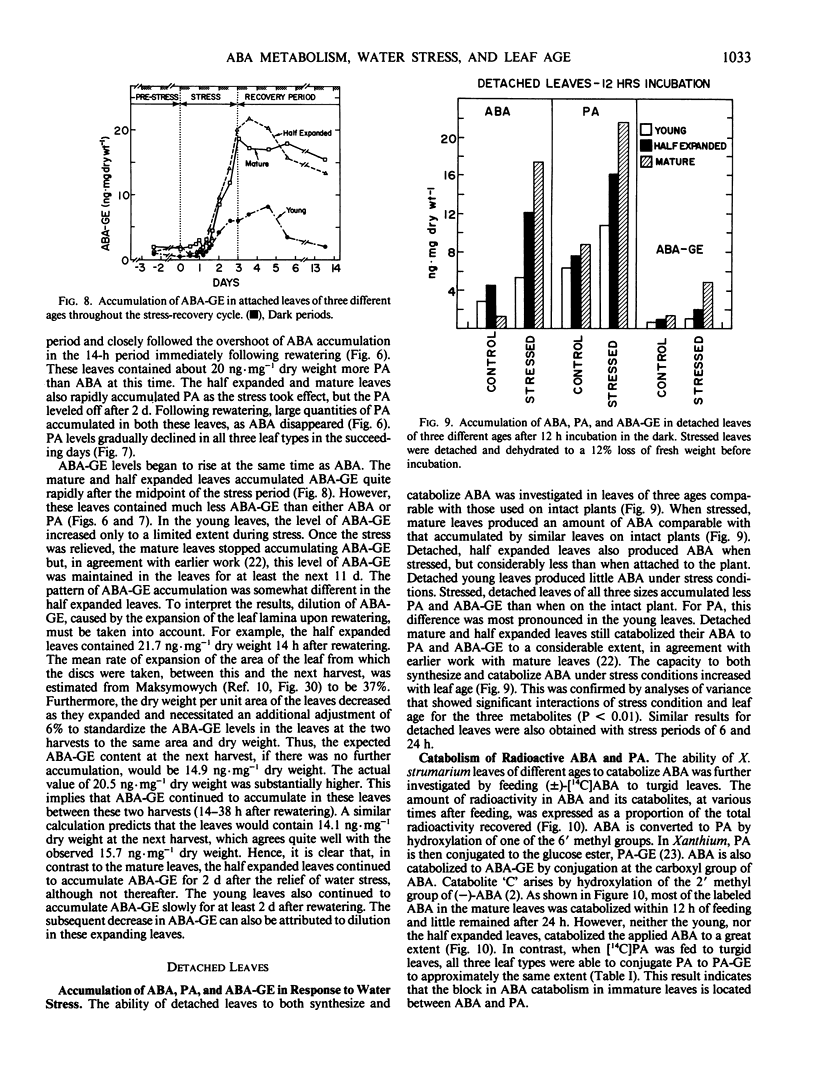
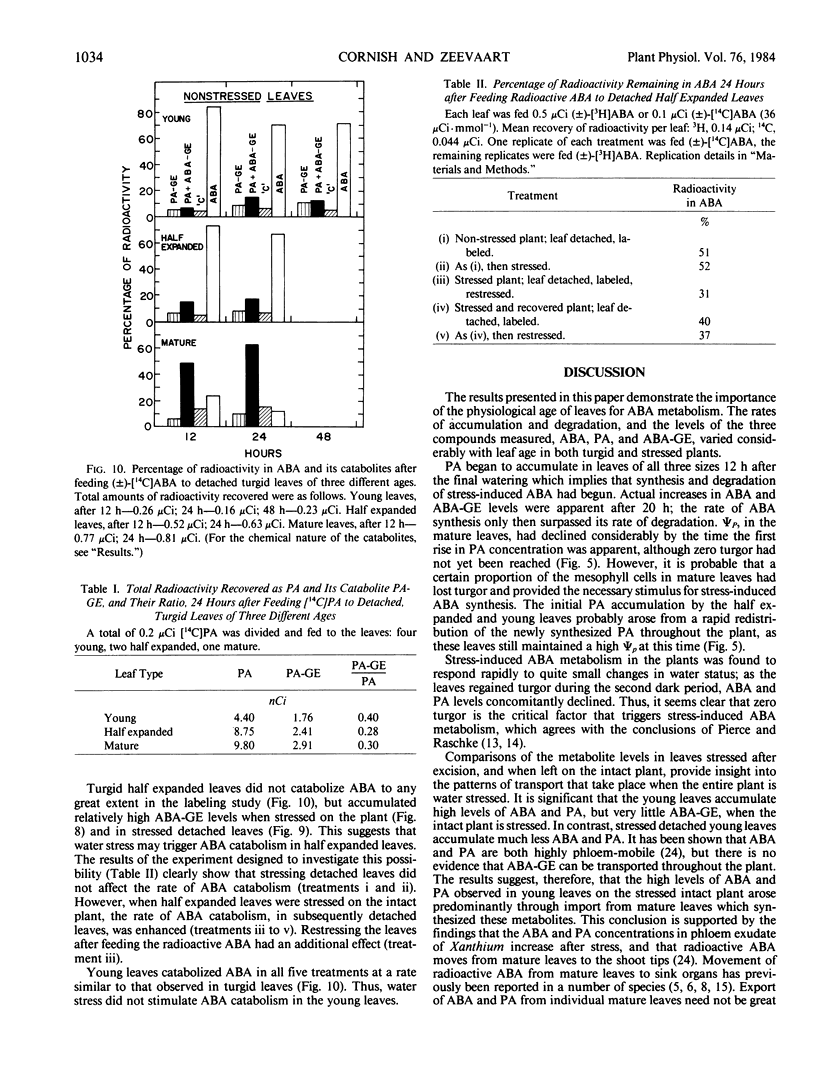

Selected References
These references are in PubMed. This may not be the complete list of references from this article.
- Beardsell M. F., Cohen D. Relationships between Leaf Water Status, Abscisic Acid Levels, and Stomatal Resistance in Maize and Sorghum. Plant Physiol. 1975 Aug;56(2):207–212. doi: 10.1104/pp.56.2.207. [DOI] [PMC free article] [PubMed] [Google Scholar]
- Harrison M. A., Walton D. C. Abscisic Acid Metabolism in Water-stressed Bean Leaves. Plant Physiol. 1975 Aug;56(2):250–254. doi: 10.1104/pp.56.2.250. [DOI] [PMC free article] [PubMed] [Google Scholar]
- Nelsen C. E., Safir G. R., Hanson A. D. Water potential in excised leaf tissue: comparison of a commercial dew point hygrometer and a thermocouple psychrometer on soybean, wheat, and barley. Plant Physiol. 1978 Jan;61(1):131–133. doi: 10.1104/pp.61.1.131. [DOI] [PMC free article] [PubMed] [Google Scholar]
- Setter T. L., Brun W. A. Abscisic Acid Translocation and Metabolism in Soybeans following Depodding and Petiole Girdling Treatments. Plant Physiol. 1981 Apr;67(4):774–779. doi: 10.1104/pp.67.4.774. [DOI] [PMC free article] [PubMed] [Google Scholar]
- Sharkey T. D., Raschke K. Effects of phaseic Acid and dihydrophaseic Acid on stomata and the photosynthetic apparatus. Plant Physiol. 1980 Feb;65(2):291–297. doi: 10.1104/pp.65.2.291. [DOI] [PMC free article] [PubMed] [Google Scholar]
- Zeevaart J. A., Boyer G. L. Accumulation and transport of abscisic Acid and its metabolites in ricinus and xanthium. Plant Physiol. 1984 Apr;74(4):934–939. doi: 10.1104/pp.74.4.934. [DOI] [PMC free article] [PubMed] [Google Scholar]
- Zeevaart J. A. Changes in the Levels of Abscisic Acid and Its Metabolites in Excised Leaf Blades of Xanthium strumarium during and after Water Stress. Plant Physiol. 1980 Oct;66(4):672–678. doi: 10.1104/pp.66.4.672. [DOI] [PMC free article] [PubMed] [Google Scholar]
- Zeevaart J. A. Metabolism of Abscisic Acid and Its Regulation in Xanthium Leaves during and after Water Stress. Plant Physiol. 1983 Mar;71(3):477–481. doi: 10.1104/pp.71.3.477. [DOI] [PMC free article] [PubMed] [Google Scholar]


